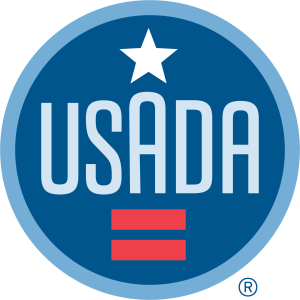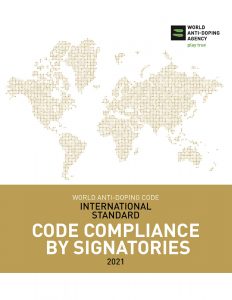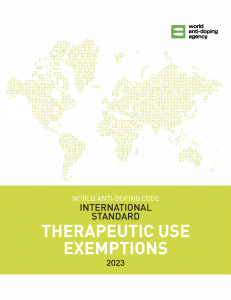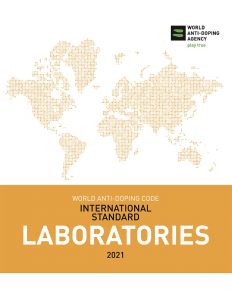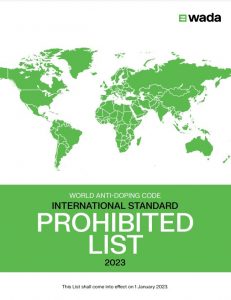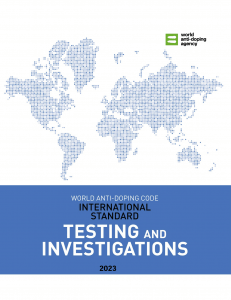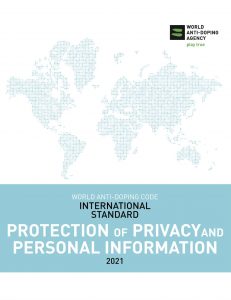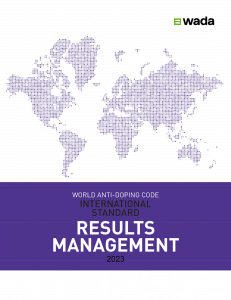World Anti-Doping Code
USADA is a fully compliant signatory to the World Anti-Doping Code and WADA International Standards, considered the foundation of the strongest anti-doping programs globally.
The Code is a core document that provides the framework for anti-doping policies, rules, and regulations within sport organizations and among public authorities. It is designed to harmonize anti-doping policies and ensure the standards are the same for all athletes. The Code works in conjunction with eight international standards that provide further rules which govern anti-doping efforts.
International Standard for Code Compliance by Signatories
The International Standard for Code Compliance by Signatories (ISCCS) sets out to ensure that strong, Code-compliant anti-doping rules and programs are applied and enforced consistently and effectively across all sports and all countries, so that clean Athletes can have confidence that there is fair competition on a level playing field, and public confidence in the integrity of sport can be maintained.
The Prohibited List
The prohibited list outlines the substances and methods prohibited in sport.
International Standard for Testing & Investigations
Testing is an extremely crucial piece of any anti-doping program. The purpose of the International Standard for Testing & Investigations (ISTI) is to plan for effective testing and to maintain the integrity and identity of samples, from notifying the athlete to transporting samples for analysis.
International Standard for Therapeutic Use Exemptions
The purpose of the International Standard for Therapeutic Use Exemptions (ISTUE) is to harmonize the process of granting TUEs across sports and countries. The WADA TUE process ensures athletes can get access to important medication when appropriate while ensuring clean athletes a level playing field.
International Standard for Laboratories
The purpose of the International Standard for Laboratories (ISL) is to ensure production of valid test results and evidentiary data and to achieve uniform and harmonized results and reporting from all accredited laboratories. Anti-doping organizations that are signatories to the Code agree to have all samples analyzed at WADA accredited labs.
International Standard for Protection of Privacy and Personal Information
The purpose of the International Standard for the Protection of Privacy and Personal Information (ISPPPI) is to ensure that all relevant parties involved in anti-doping in sport adhere to a set of minimum privacy protections when collecting and using athlete personal information, such as information relating to Whereabouts, doping controls, and Therapeutic Use Exemptions.
International Standard for Education
The purpose of the International Standard for Education is to support the preservation of the spirit of sport as outlined in the Code and to help foster a clean sport environment. It is recognized that the vast majority of athletes wish to compete clean, have no intention to use prohibited substances or methods and have the right to a level playing field.
International Standard for Results Management
The purpose of the International Standard for Results Management is to set out the core responsibilities of Anti-Doping Organizations with respect to results management. In addition to describing certain general principles of results management, this International Standard also sets out the core obligations applicable to the various phases of results management from the initial review and notification of potential anti-doping rule violations, through provisional suspensions, the assertion of anti-doping rule violations and proposal of consequences, the hearing process until the issuance and notification of the decision and appeal.
The term “World Anti-Doping Code signatory” refers to an organization that has fully accepted the Code and accompanying International Standards. All Code signatories are listed on WADA’s website here.
Code acceptance means that a sport organization agrees to the principles of the Code and agrees to implement and comply with the Code.
Once a sport organization accepts the Code, it then needs to implement it. Code implementation means that a sport organization amends its rules and policies to include the mandatory articles and principles of the Code.
Finally, enforcement refers to the sport organization actually enforcing its amended rules and policies in accordance with the Code.
WADA monitors implementation of and compliance with the Code.
The World Anti-Doping Agency announced USADA as one of the first organizations to formally adopt the World Anti-Doping Code on April 7, 2003.
To date, more than 660 sport organizations, including the International Olympic Committee (IOC), the International Paralympic Committee (IPC), all Olympic Sport International Federations (IFs) and all IOC-recognized IFs, National Olympic and Paralympic Committees, National Anti-Doping Organizations, and many other sport organizations have accepted the World Anti-Doping Code.
In the United States, most major professional sport leagues are not signatories to the World Anti-Doping Code.
World Anti-Doping Code Effective January 1, 2021
The U.S. Anti-Doping Agency is a signatory to the World Anti-Doping Code, which, along with the Prohibited List and the International Standards, are created and maintained by the World Anti-Doping Agency (WADA) in order to harmonize anti-doping efforts around the world across all sports. The international anti-doping community, including WADA and all of the Code-Signatories, have completed a full review and revision of the 2015 World Anti-Doping Code, and as a result of this review and revision, on January 1, 2021, a new World Anti-Doping Code took effect. USADA was an active participant in the Code review, submitting comments and feedback, and sharing our expertise and experience throughout the process. Learn more about the 2021 Code changes.



